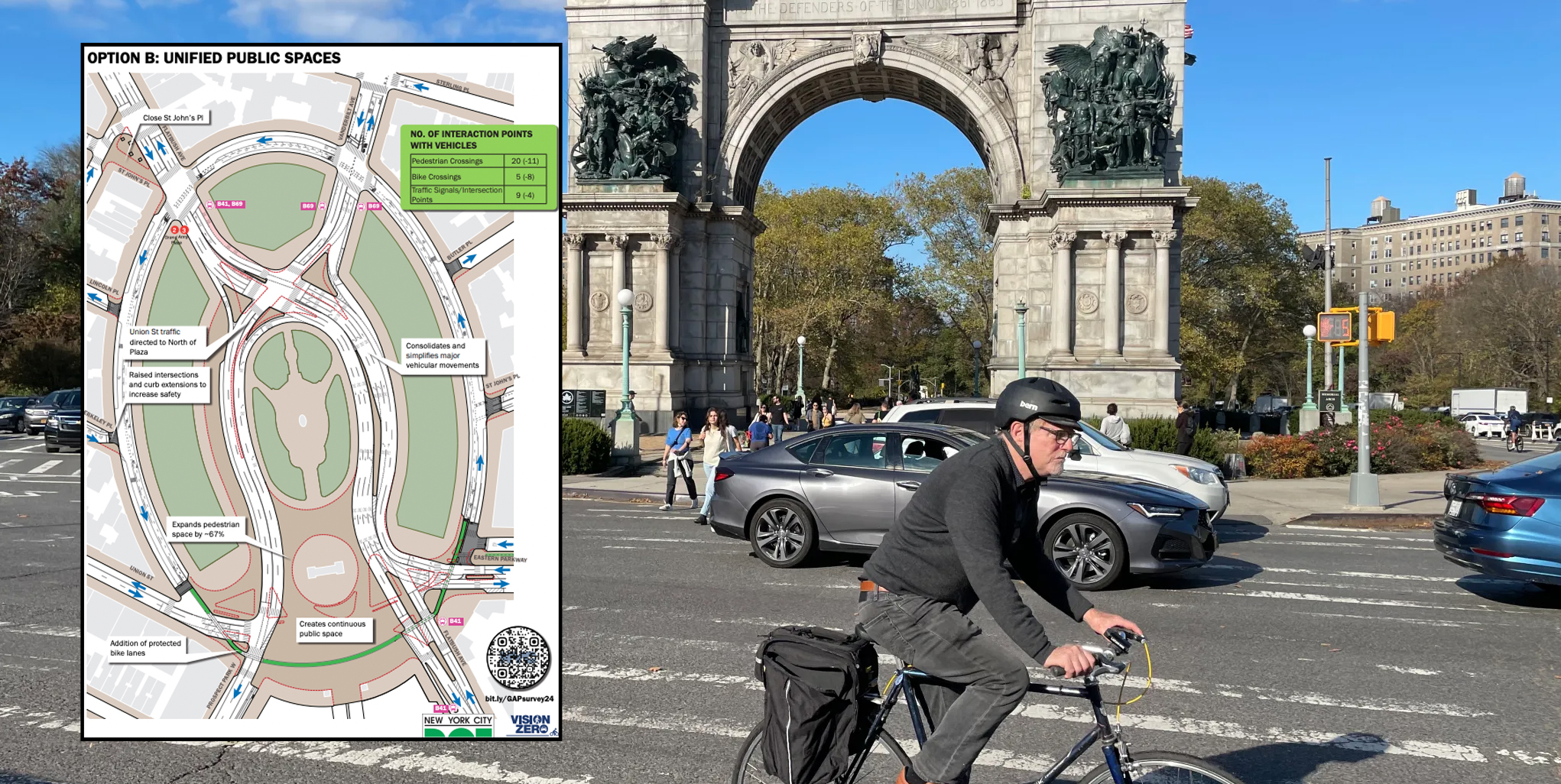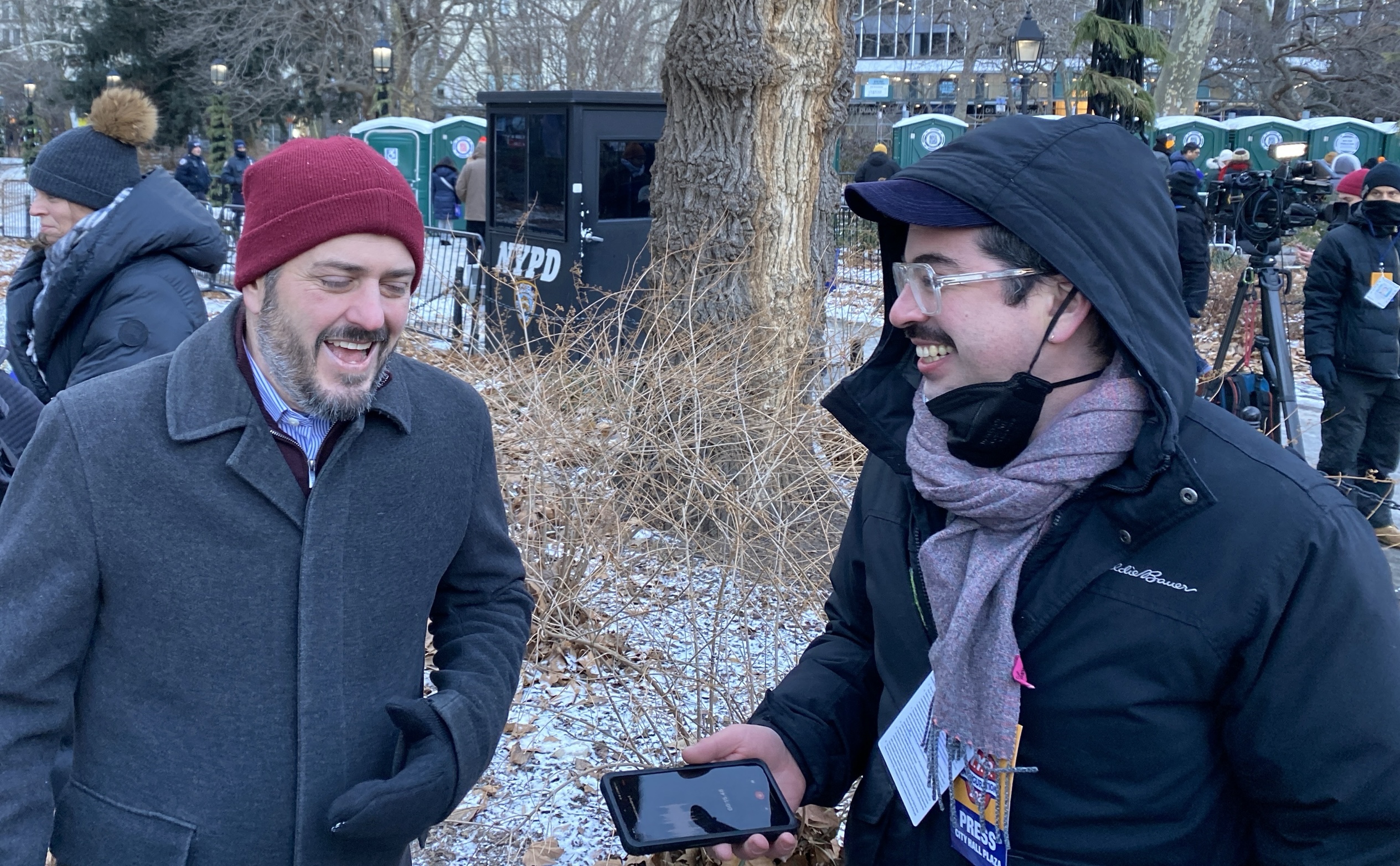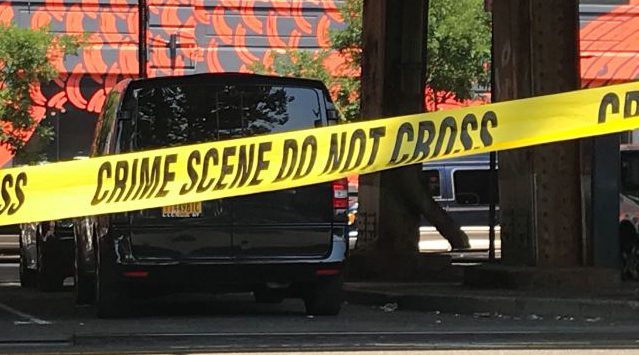Be part of the grand design.
The Department of Transportation wants New Yorkers to weigh in on how the city should redesign Grand Army Plaza — including an option that closes Union Street to cars between Prospect Park West and Flatbush Avenue to reconnect the storied plaza to Prospect Park — at design workshops this Saturday.
The latest chapter in the decades-long effort to fix the traffic circle and plaza next to Prospect Park kicked off in earnest two years ago and resulted in two potential designs. Both designs [PDF] simplify the auto, pedestrian and cycling environment around the plaza by reducing the 57 different crossings and traffic signals confronting people making their way around Grand Army, and beefing up the amount of space pedestrians have between the Soldiers and Sailors Archway and the park itself.
Simplifying the traffic flow and adding additional pedestrian space wouldn't just make Grand Army Plaza safer. A redesign with more space for people would also fit the plaza in with the reality of how its used today, especially on weekends when the popular and beloved farmer's market squeezes people into the park entrance plaza but squeezes out people trying to walk by the market.
Both potential futures for the plaza add raised crosswalks to the intersections of each cross street on the outer edges of the circle, and straighten out the way that Flatbush and Vanderbilt avenues weave across each other. The biggest difference comes with what to do about the ability for drivers to cut across Grand Army Plaza to Eastern Parkway.
One new design which the DOT calls Option A, cuts the number of crossings and traffic signals to 41. It adds some pedestrian space in between the plaza and the entrance to Prospect Park, narrowing the roadway that connects Union Street to Eastern Parkway and Flatbush Avenue.
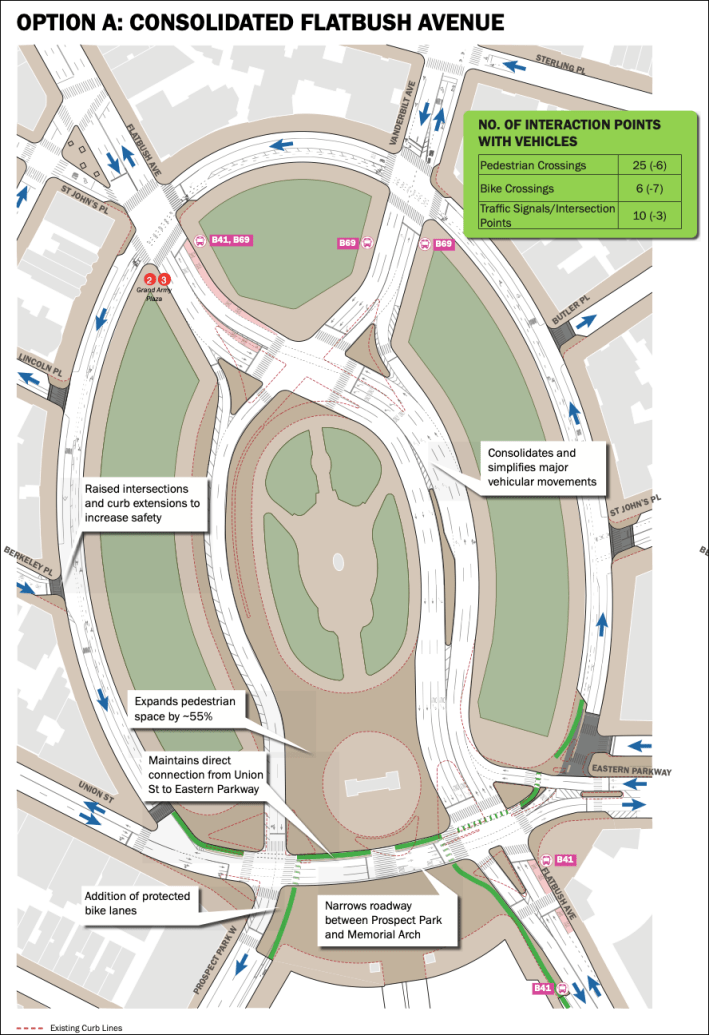
But by leaving three lanes of traffic between the plaza and the park, Option A would still present challenges to pedestrians and cyclists trying to make it through the circle and to the park, and put pedestrians at risk of being hit by drivers making right turns onto Flatbush Avenue.
In contrast, Option B unifies the plaza and the park by eliminating the ability to drive east across the bottom part of the circle from Union Street. Flatbush Avenue on the north and south side of the circle would connect in a straighter path, while still providing connections to and from Eastern Parkway.
The number of pedestrian crossings would drop from 31 today to just 20 under Option B. And there would be two-way traffic inside the circle:
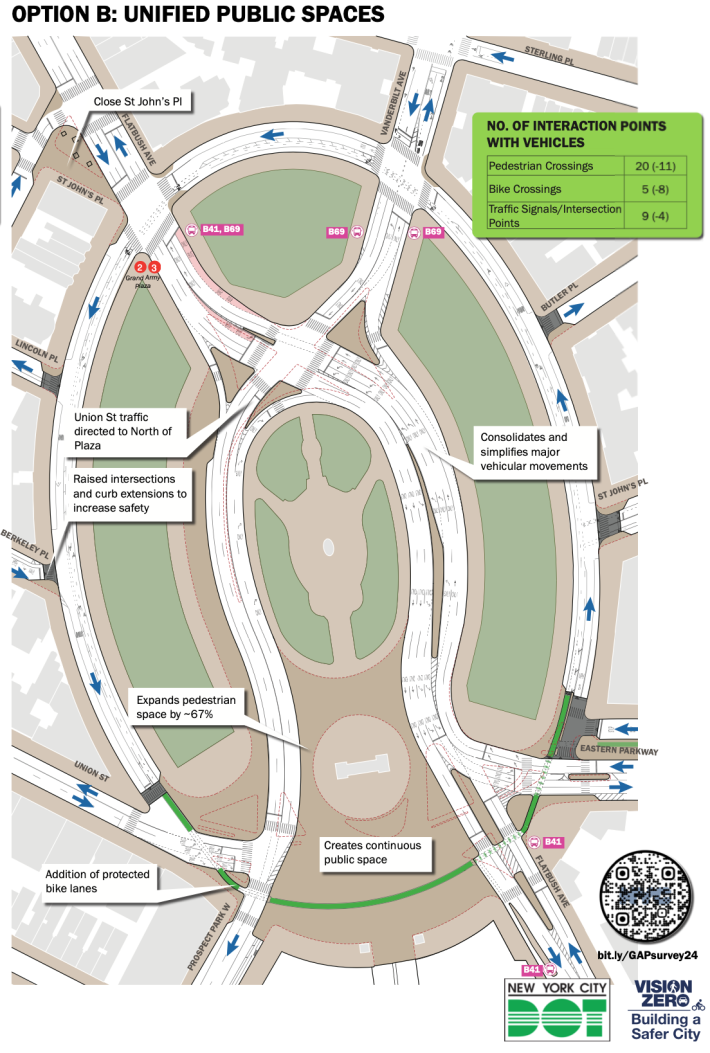
Crucially, simplifying the traffic on Flatbush Avenue would create straightforward pedestrian crossings between the Brooklyn Public Library and Prospect Park, removing the current chaos where pedestrians wait out northbound traffic from Flatbush, then cross to a thin, traffic-engulfed sliver of sidewalk between the park and library to wait for southbound traffic to stop before entering the park.
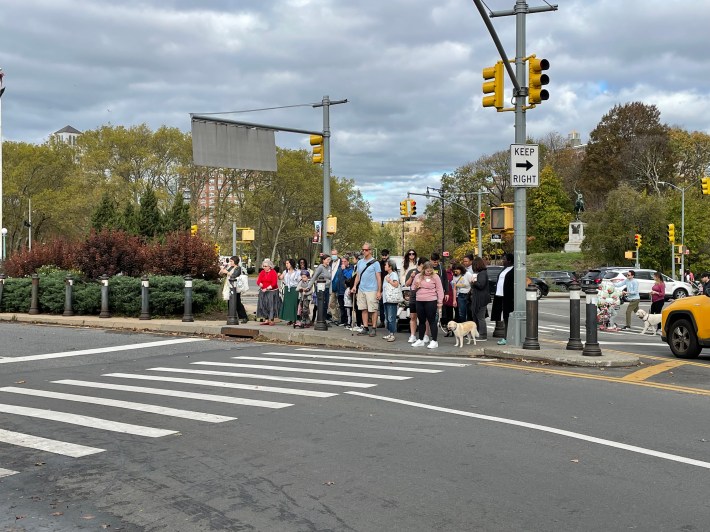
Uniting the park and Grand Army Plaza wouldn't wreck traffic patterns that use the traffic circle, according to the DOT. The changes would even make life easier for the majority of drivers by prioritizing the most common paths through the circle.
In its powerpoint on the usage patterns of Grand Army Plaza, the agency points out that just over half the traffic through the traffic circle goes between Flatbush Avenue North and Eastern Parkway or Flatbush Avenue south, but only 16 percent of the possible routes through Grand Army Plaza make that connection.
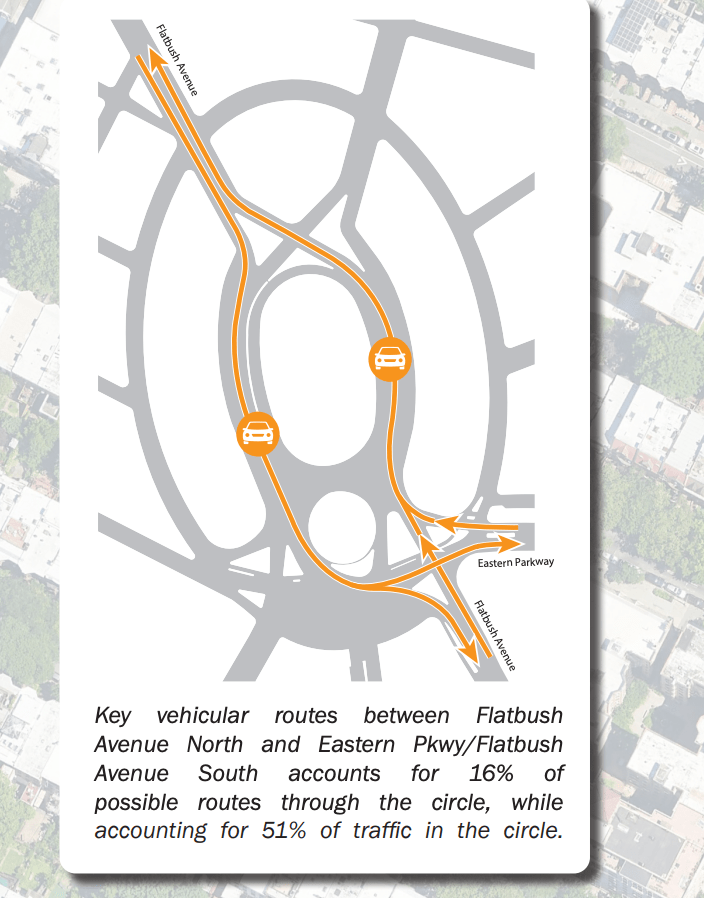
Simplifying the traffic patterns by directly connecting those streets will move cars, buses and trucks where they need to go much more efficiently than the current setup where drivers have to drive west before going east. Buses especially would have an easier time with Option B, as a straight shot connecting Flatbush Avenue in the north and south side of it lets buses avoid turns and multiple light cycles that otherwise slow them down.
It's also the way the park's designers Olmsted and Vaux envisioned the plaza:
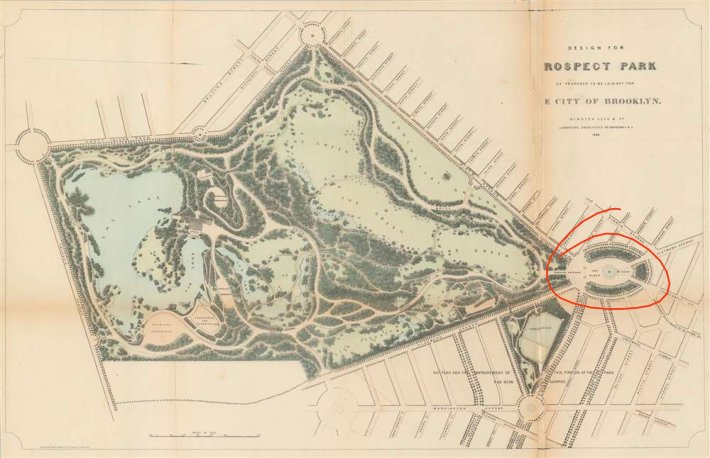
Option B is also an idea that's been kicking around for an astounding 17 years, all the way back to 2007 when a handful of neighborhood activists began showing off a design uniting that plaza and the park.
In addition to the big changes at Grand Army Plaza, the DOT also wants feedback on what to do for more permanent design changes on Vanderbilt Avenue and Underhill Avenue. The first workshops will be on Saturday, from 10 a.m. to 2 p.m. at the entrance to Prospect Park and 1 p.m. to 4 p.m. at Vanderbilt and St. Marks avenues.
Hey Brooklyn! Join us to share feedback on proposed concepts for Grand Army Plaza and Vanderbilt Open Street.
— NYC DOT (@NYC_DOT) June 10, 2024
When: 6/15, 10AM-2PM
Where: Grand Army Plaza entrance to Prospect Park
When: 6/15, 1PM-4PM
Where: Vanderbilt Ave. and St. Marks Ave pic.twitter.com/qWA6cOeAHM
The agency will also hold workshops on June 17 at the Brooklyn Public Library, June 20 at the Fort Greene Senior Citizens Council and June 25 at Medgar Evers College, in case you have beach plans this Saturday.
Medgar Evers College, 7/10, 3-7PM
— NYC DOT (@NYC_DOT) June 12, 2024
(main entrance at Crown St/Bedford Ave)
Fill out the survey through 7/31: https://t.co/63mNmoV8vs
2/2
